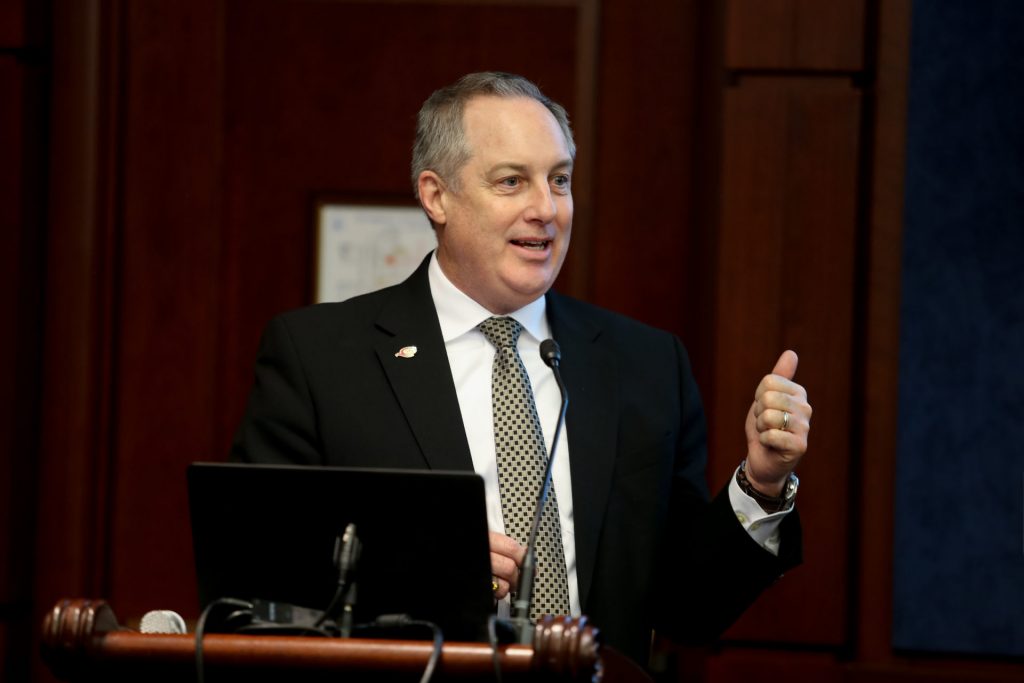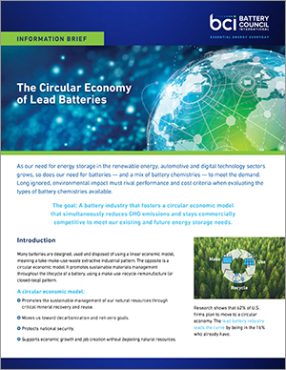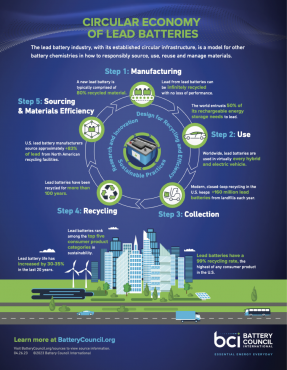
What began as a data trickle a few decades ago has grown into a full-fledged data tsunami. Consider this: Internet users generate about 2.5 quintillion bytes of data each day, which is equal to the number of all the ants on the planet multiplied by 1001.
Likewise, data centers are racing to manage and protect that data – and ensure continuous availability for everyone, from 911 callers to Wall Street brokers. Recently, we heard how one major data center provider is navigating today’s data demands. The company’s roadmap includes using lead batteries to provide essential backup energy storage and leveraging the technology to help meet sustainability goals.
The Setting: Capitol Hill, Washington, D.C.
QTS Data Centers is a leading co-location data center (many customers in one data center) provider in North America and Europe, with over 1,000 customers. Alan French, the company’s vice president of engineering, was one of five experts who spoke on energy storage at a Capitol Hill briefing on February 12. Battery Council International (BCI) and Essential Energy Everyday sponsored the event in recognition of National Battery Day, observed February 18.
Data is Critical
French’s first point was to stress the criticality of data – and reliable connectivity – in our society. QTS maintains 25 data centers with over 650 MW total power. Each center may have up to a dozen carriers, such as Verizon, AT&T, Zayo, and fiber connections to other sites, too, that are business-critical. QTS ensures these carriers don’t go down and the Federal Communications Commission (FCC) mandates that they don’t go down.
“Many of our localities have things like 911 call centers, healthcare, medical records and imaging,” said French. He gave an example of a doctor preparing to enter surgery who needed access to medical records and imaging. “The critical nature of that data in that moment is significant.”
He also used climate change, specifically, last fall’s California wildfires and rolling blackouts, as another example. “People needed access to 911, healthcare, insurance companies, financial institutions … and we can’t interrupt financial markets. The stability of our nation [is at stake] if these processes go down.”
Data is Enormous and Growing
Second, French relayed the unprecedented growth in data.“There’s been a huge wave, but the wave is going to continue.” He cited that we send 2.5 million emails every second. And, we’re all involved in data-driven daily activities like e-commerce, e-service, e-travel and multimedia platforms. QTS services those customers, as well as hyperscale, cloud, and software-as-a-service clients.
Additional growth drivers include artificial intelligence, virtual reality machine-learning and 5G technology, all of which led to $360 million in new data center construction last year in the U.S. He said this scalability is needed to keep pace with the data explosion which represents a $160 billion market. And, those facilities all require backup power technologies (batteries).
Lead battery Essential to Data Centers
At QTS, lead batteries are mission-critical. “Utility interruptions do happen. When that happens, if the IT equipment loses a cycle or less, that IT equipment could take up to six to eight hours to reset. That means the applications – the network – is down.”
QTS found its preventative solution in bringing backup energy storage into the very middle (the “spine” of the building). “This is where battery systems become key. They allow uninterruptible power supplies (UPS) to provide mission-critical backup power.”
Currently, the two mainstream UPS battery technologies used by data centers are lead and lithium-ion. Lead, as a long-established energy storage technology, is well proven in data center applications, according to a recent comparison of the two technologies in Technical Review.2
QTS relies on lead battery technology for various reasons.“We use more higher-end batteries that give us longer life and higher reliability. We can package the batteries right into the rooms, using cabinets or racks.” He added that the lead battery’s longer life equates to less environmental impact, too.
Lead Batteries Advance QTS Sustainability Goals
Alan explained the progress QTS is making toward meeting its self-imposed sustainability objectives. Lead batteries are playing a major role, in part, for providing the energy storage necessary for the data center sector.
“Data centers use a significant amount of grid power in the U.S. QTS has a goal to procure 100% of its power from renewable sources by 2025. We are one-third of the way there.” The company is using solar and wind power entirely at some of its data centers throughout the U.S. According to Data Center Frontier, wave power, carbon capture, solar and wind power may all play a larger role in how data centers are powered in the future, as infrastructure funds bring new resources to deploying IT capacity at scale.3
French ended by stressing the impressive circularity of lead batteries. “We have a great partner in lead batteries. No other product … is recycled more than them.”
Watch
Full Capitol Hill Briefing here. Alan French’s talk begins at minute 22:25.
PowerPoint presentation here.
Sources
2 “10 Key Factors to Consider When Choosing a Data Centre UPS Battery”
3 “The 8 Trends That Will Shape the Data Center Industry in 2020”








